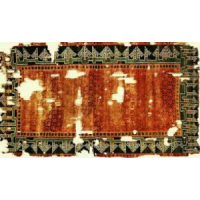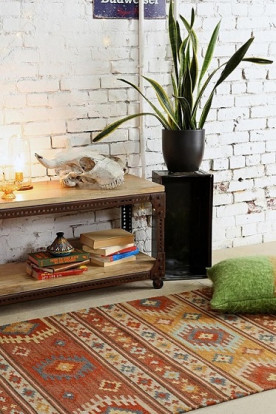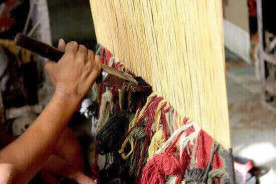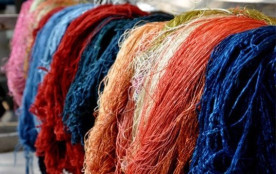Carpets are an irreplaceable piece of home decor. Although generally overlooked as a piece of woven home decor, rugs have a rich history embedded in versatile cultures. Centuries ago, before sedentary life became widespread, rugs were crucial in nomadic peoples’ lives. Rugs were used for purposes of isolation as well as to embellish the inside of tents. They were widely used by nomadic peoples also because they were easily carried on horseback when moving from one location to the next. Motifs and colors made rugs pieces of attractive decor objects. Sheep and goat wool used in the making of rugs helped isolate the inside of tents as well as keeping pesticides away. Even though rugs have a very long history the oldest rug was found in Altai Mountains and dates back to 400 BC. With its still lively colors and dazzling motifs, the so called ‘Pazirik’ rug is displayed at St. Petersburg’s Hermitage Museum. Research has shown that rugs originated in Central Asia and communities of this region shaped the practise of making rugs. Turkic, Iranian, Chinese and Indian communities of this region have played an important role in spreading of this ancient tradition from east to west. All of these communities have created and advanced the techniques used in the making of rugs. Dyes and symbols used in rugs are closely interrelated with the culture and folklore of these communities.
Handmade rugs have entered Anatolia and Iran with the Seljuk Empire. Due to wars, migration and natural disasters not many rugs have survived to our day. Carpet weaving in Anatolia started in the 11th century with the Seljuks and it has developed since then. On his expedition, Marco Polo passed through Anatolia and he mentioned the beauty and quality of rugs of this land. Rug weaving had its brightest days in the 13th and 14th century. While the production started on looms at homes, later on production moved to workshops enabling the production of larger rugs. Rugs woven in these centuries usually have graphic motifs.

13th century Seljuk Rug
Ottoman Empire had consolidated its power by the 15th century, but carpet production did not become an industry. It continued with individuals producing carpets for personal use.
16th and 17th centuries were very productive time periods for carpet production. Reflection of Ottoman architecture and culture in general can be seen on carpets woven in these centuries. Although motifs got richer and techniques developed further, quality of magnificent Seljuk carpets were never matched.

16th century Medallion Usak Rug
18th and 19th centuries were what we can call the third significant carpet production age. In these centuries carpets became a valuable commodity and the artistic quality in production lost its priority. In our day carpet production continues in the land of Anatolia in different regions. Carpets are made at homes to support household income, at workshops in greater quantities, in factories by machines, using traditional methods taking the artistic quality of carpets into consideration and also commissioned in specific sizes and colors.









